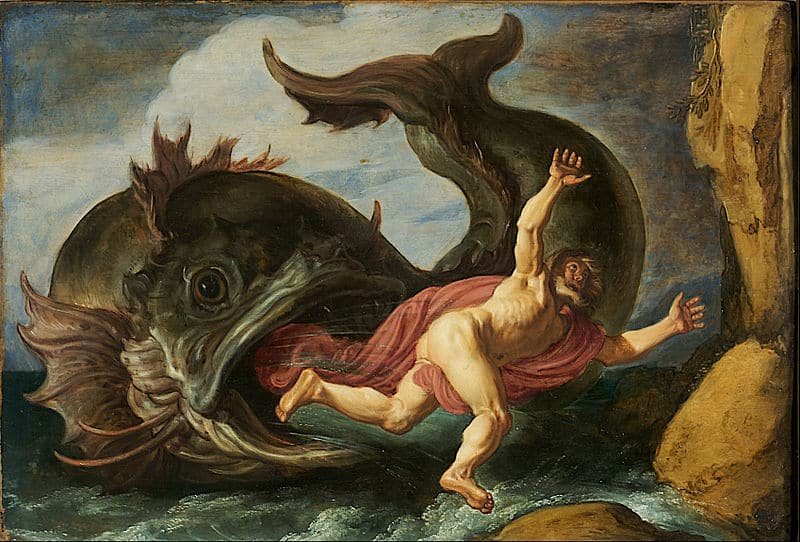Many Christians today wonder: What is the sign of Jonah? The biblical story of Jonah’s three days in the belly of a great fish exemplifies the need for faith and trust in the Lord. There are many Christian interpretations of Jonah, but none is more powerful than the Bible. This study explores the significance of Jonah’s three days in the belly of a fish, and how it speaks to our own lives today.
Jonah’s three days in the belly of a great fish
In the book of Jonah, the Lord prepares a great fish to swallow Jonah. The fish may have been a specially made creature or a large creature known to swallow humans. In any case, the supernatural hand of God is evident in the story. As a result, it is important to take the story literally, and the meaning of Jonah’s three days in the belly of a great fish must be interpreted accordingly.
The story of Jonah’s three days in the belly was originally told in the Hebrew Bible, but it is unclear whether the text used the phrase “three days and three nights” or a more accurate phrase. However, a careful study of the text will uncover the correct interpretation. Jonah is believed by many to be the only person to have survived Jonah’s three days and three nights in the belly of a giant fish. This is an excellent example of how to interpret the biblical text and make it more meaningful to our lives today.
The story of Jonah reveals many important lessons about the nature of God and the human spirit. It teaches us not to run away from God but to accept His forgiveness. When we trust in God, we will not fail to accept his mercy. If we have faith in Jesus Christ, God will also grant us second, third, and fourth chances. And if we don’t believe, God will take us off the earth.
During the time of Jesus’ ministry, the “sign of Jonah” accompanied many of His miracles. Jesus had already begun to perform miracles after being questioned about His claims of being the Messiah. He had even cured a man possessed by Satan and healed a man born deaf. The Pharisees tried to discredit him, accusing Him of using Satan and demons to do what He did. Yet Jesus refused to show further proof of His claim, saying that the only real proof of His identity would be the resurrection from the dead.
Jesus placed Jonah’s experience in the belly of the great fish on a par with His own resurrection. He compared the experience to His own. After all, Jesus was literally dead before he was resurrected. That is a powerful comparison. Jesus understood death and resurrection to be analogous to death and compares the story to His own life. In fact, he made this story a symbolical statement of His death and resurrection. It was the crowning proof of His deity, and He used it as a prophecy for His own impending death and resurrection. The story of Jonah teaches us that death is a reality that can only be avoided through repentance.
Jesus, for example, told his followers that He would be buried for three days and nights. As a result, He said that the three days and three nights would be the length of His suffering. In addition to Jonah, Jesus told his followers that He would be in the tomb for three days and three nights. The disciples understood this lesson and took it to heart. Those who have suffered, and those who have been afflicted by it, have a special place in their hearts.
CHECKOUT:
- 5 Stories Of Obedience In The Bible And How to Obey God
- 5 Stories Of Patience in the Bible- examples of Patience in the Bible
- 23 Bible Verses For Restoration
Jesus’s own death and resurrection as a typological model for the sign of Jonah
Jesus mentions the “sign of Jonah” in two of his parables: Luke 11:29-32 and Matthew 12:38-42. The scribes and Pharisees ask him for a sign to prove His authority. But Jesus answers that he will not give additional signs to this evil generation. While Jonah is the sign of God to Nineveh, Jesus is the greater Jonah. Using Jonah as a typological model for His own death and resurrection is an interesting approach to this parable.
It is not clear why Jesus used Jonah as a model for his own death and resurrection. Nevertheless, we can make some assumptions. The ancients believed the sea was the entrance to hell and that Jonah was a sign of God’s Son. This is evident from Jonah’s burial and resurrected body on the third day, but we cannot say that Jesus was dead when he was buried.
The Pharisees, however, were not convinced that Jesus was the Messiah, and so they kept asking him for a sign that would prove his claim. They were not yet convinced by Jesus’ claims and accused Him of driving demons. But in response, Jesus said, “You will only see the sign of Jonah when you repent of your sins and believe in the name of the Son of God.”
When we think of the sign of Jonah, we immediately think of Christ, but how do we make the connection between Christ and the prophet? The Old Testament, like the New Testament, contains the symbolism of the Old Testament and the New.
While the Old Testament represents Christ, the New Testament reflects Christ’s death and resurrection. Therefore, it is important to understand how the sign of Jonah compares with Christ, and what that means for Jesus.
The book of Jonah is an excellent example of the power of conviction and the difficulty of deciding whether one’s heart is in line with God’s. Throughout the book, we are challenged to ask whether our hearts match God’s. As we wrestle with this question, we can see a clear connection between Jesus and Jonah. When we think of Jesus as the Son of God, we see a vivid and powerful portrait of Himself in Jonah.
As we see, the Bible is filled with examples of God using signs to authenticate His message. For example, God gave Moses signs to prove that Moses was His chosen ones, and God used a flaming pillar on Elijah’s altar during the contest with Baal. Similarly, Jesus did many miracles to show His power over nature. One of those miracles would turn out to be His greatest sign of power over nature.
Likewise, the incarnate Christ has the power to save people who would otherwise not be saved. His desire to leave his father’s house and the country is reflected in his own flight. The Prodigal Son motif also has the same significance. While Jonah was content to live in the comfort of his home, Jesus joyfully endured torture in order to save the world from sinners.
Jesus’s refusal to indulge the Pharisees in their questioning of Christ’s legitimacy
The Pharisees and scribes often questioned the validity of Jesus. Jesus frequently addressed them as a generation of vipers and compared them to a place of eternal punishment. These comments show the importance of Jesus’ words, especially in light of the upcoming crucifixion. Here, we can see the implications of Jesus’ rebuke of the Pharisees.
In Matthew 23, Jesus makes an explicit denunciation of the religious leaders. The Beatitudes condemn false religion and cite the Pharisees as the most extreme example. These Pharisees were the most extreme in their religious practices and the furthest from God. By refusing to indulge them, Jesus is demonstrating his sternness towards the Pharisees and his disciples.
The Pharisees’ questions are based on the fact that they buried the prophets in the tombs of religious leaders. In this regard, the Pharisees were guilty of slandering the prophets. They also plotted to kill Jesus. Therefore, their question is not entirely unrelated to the question of Jesus’ legitimacy. In fact, the religious leaders were the very ones who executed him.
The word woe means sorrow. It carries a sense of imprecation, but can also be compassionate. Jesus’ seven woes were solemn declarations of future misery for sinners who refuse to repent. The scribes and Pharisees call down God’s judgment and deserve to be pitied. This is why we should recognize and reject such false teachers.
In contrast, Jude makes no reference to his relationship with the Lord. Jude would have argued that his natural relationship with Christ was subordinate to his spiritual one. He would have shrunk from emphasizing this distinction. Because Jude was not a Christian, he would have opposed the authority and mission of Christ. Jude was the only apostle of the Apostles who refused to indulge the Pharisees in their questioning of Christ’s legitimacy.
Jude’s criticism of the Pharisees’ antinomians’ lack of reverence for God’s holiness and righteousness reflects their attitude toward Christ. These people have been corrupted by the Pharisees, and their questioning of Christ’s legitimacy was incongruous. Therefore, Jesus’ refusal to indulge the Pharisees’ questioning of Christ’s legitimacy was crucial in defining the nature of the Pharisees’ apostates.
The Pharisees’ objection to the Gospel has led to several important differences in interpretation. Acts 6:7 refers to ecclesiastical faith, while Galatians 1:23 is a strong passage in favour of the former. However, the general usage of the New Testament is consistent with the former. As a consequence, we have two possible interpretations.

